Design Advice has been offered for the Portland Housing Bureau‘s affordable housing development at 3000 SE Powell Blvd. The five story building will include 180 units, with a mix of studios, 1-, 2-, and 3-bedroom apartments. 22 vehicular parking spaces are proposed.
The project is being designed by Holst Architecture, with landscape design by Ground Workshop. Home Forward is acting as the owner’s representative.
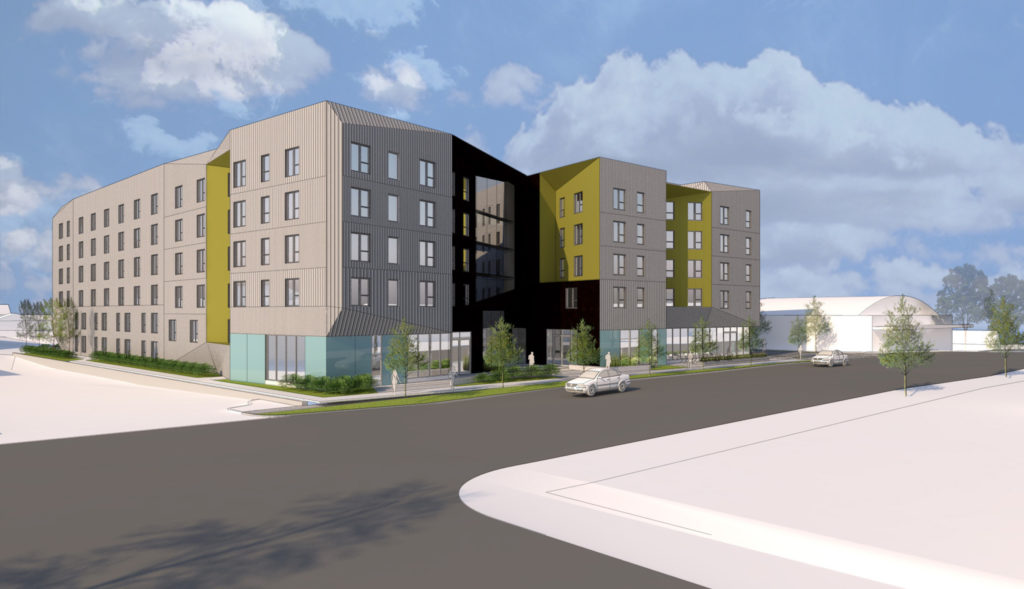
The 1.1 acre site at 3000 SE Powell Blvd, seen above in 2017, was previously home to the Safari Show Club. The site was purchased by the Portland Housing Bureau in 2017 for $3.72 million. The existing 1932 building was demolished in 2018.
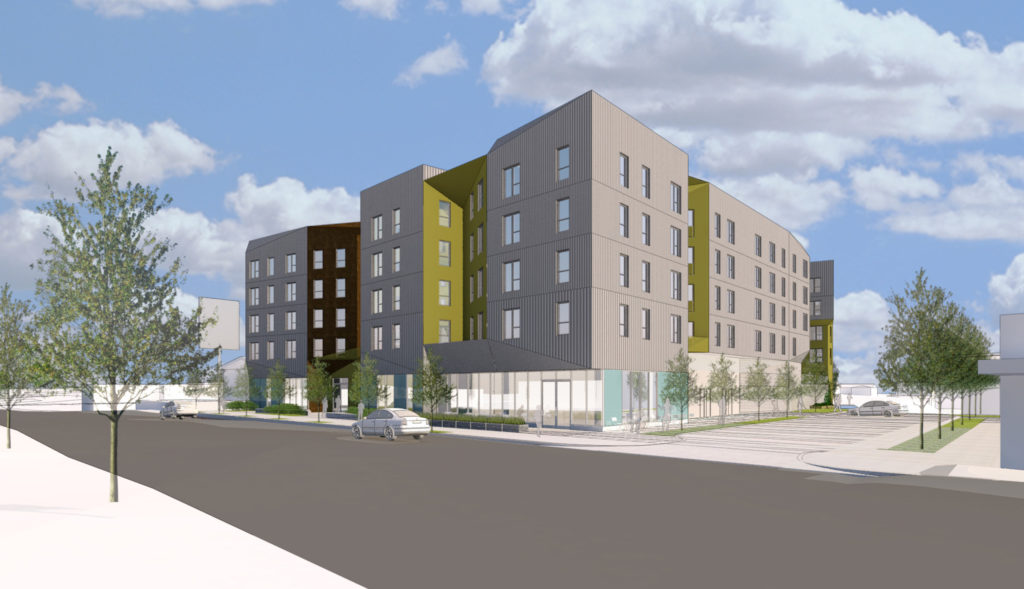
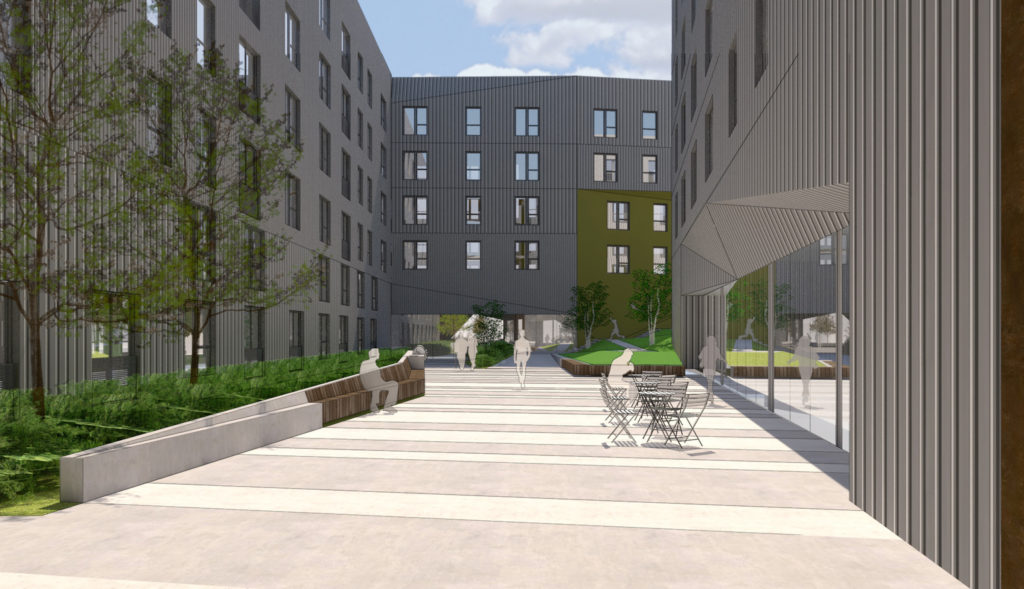
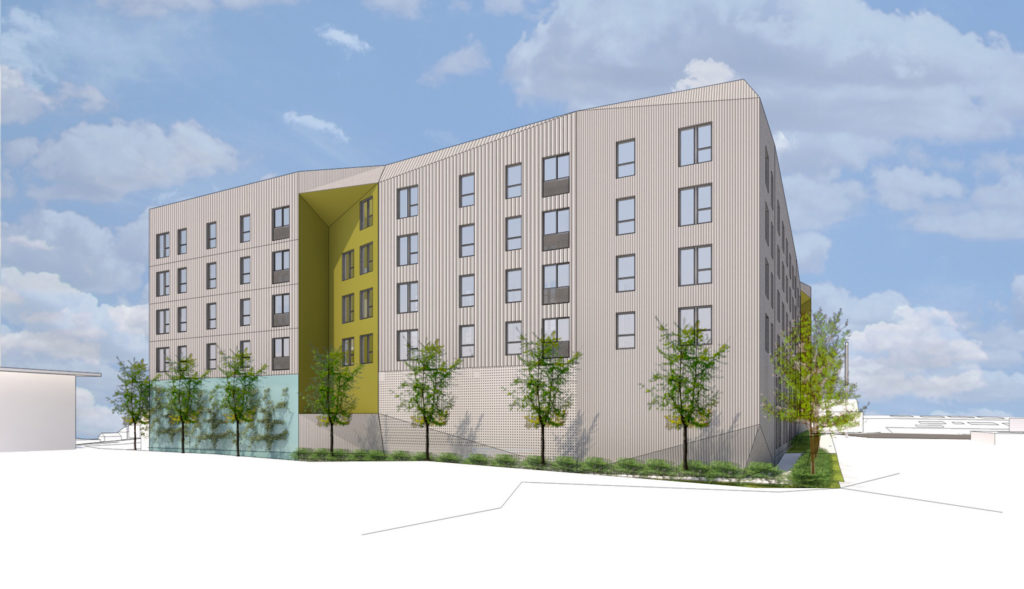
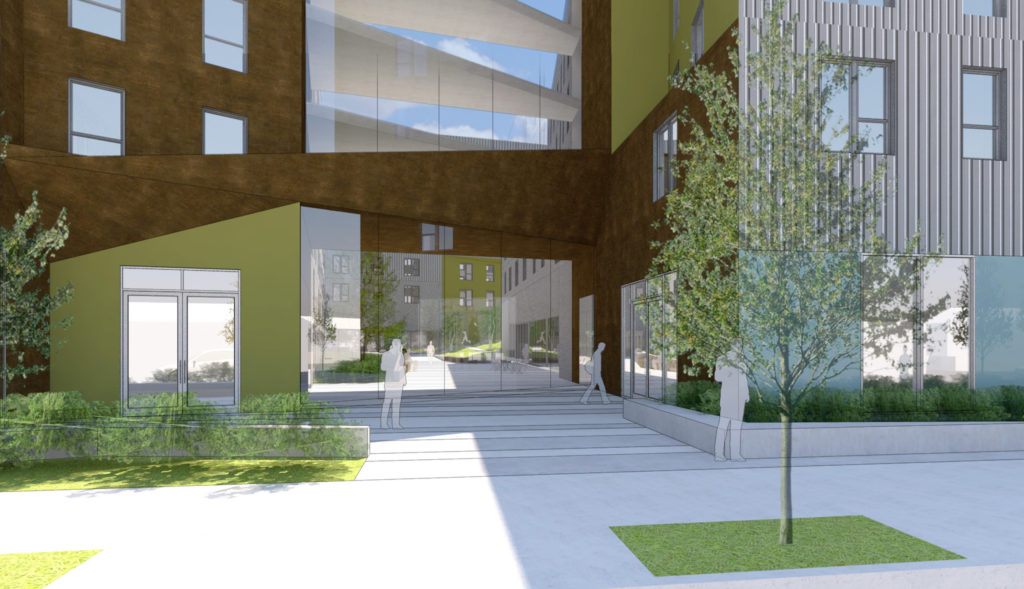
The building is arranged around a landscaped interior courtyard, accessed from a street level pass through from Powell Blvd. The courtyard is partially open to the west, where a series of stairs and switchback ramps lead up to an “overlook terrace” which will have views towards the West Hills.
As part of the development SE 30th will be extended and improved as a city street, along a portion of the western property line. After SE 30th dead ends a bicycle and pedestrian path is intended to provide a connection to SE Francis St, via SE 31st Ave. The timing of this connection will be dependent on future development on the site to the south, which is in separate ownership.
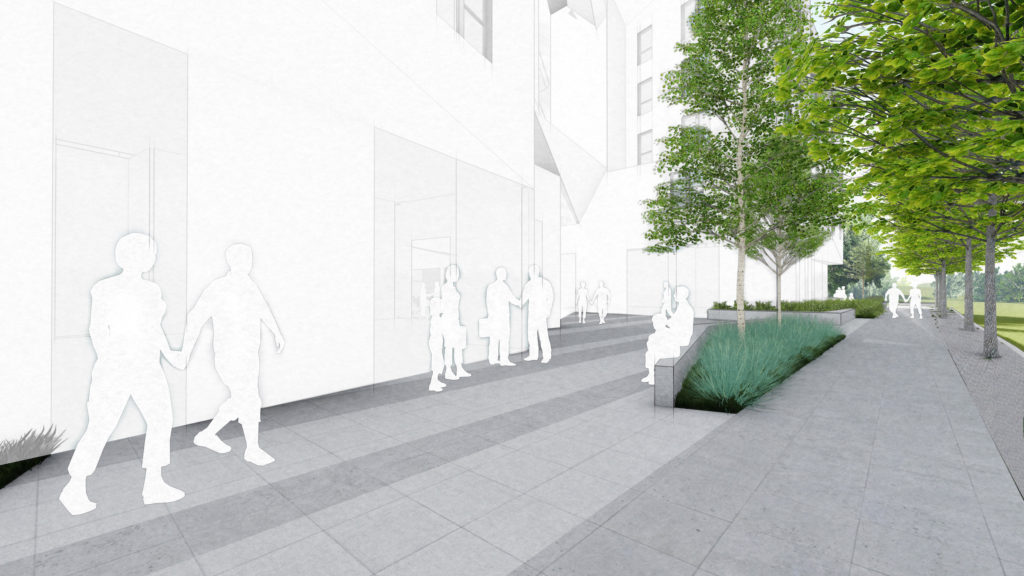
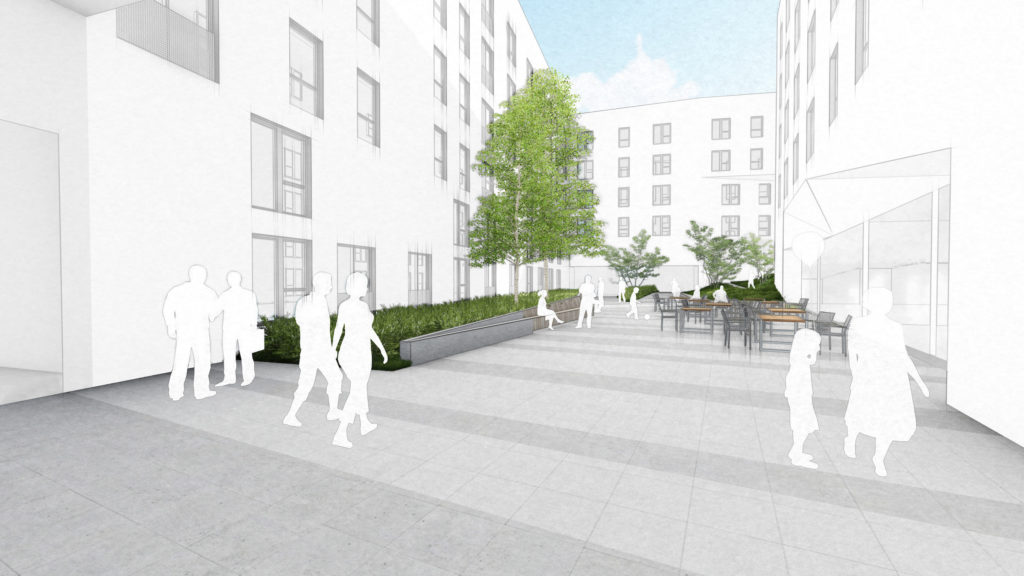
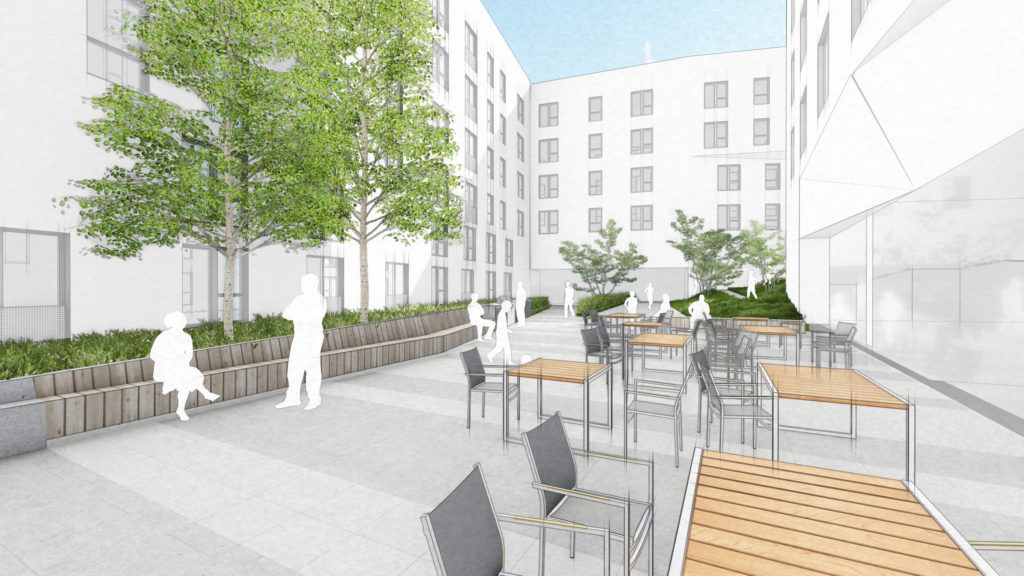
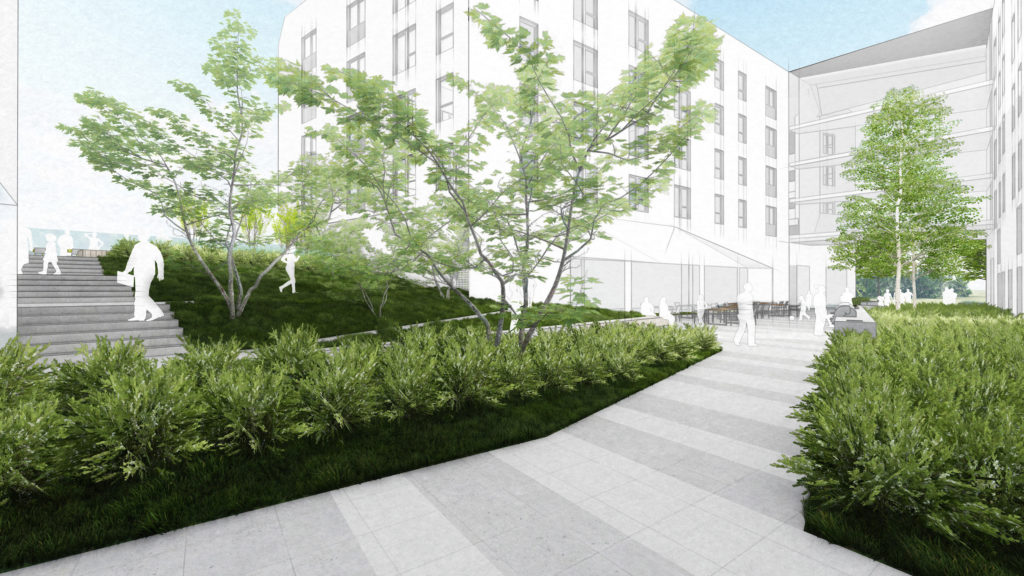
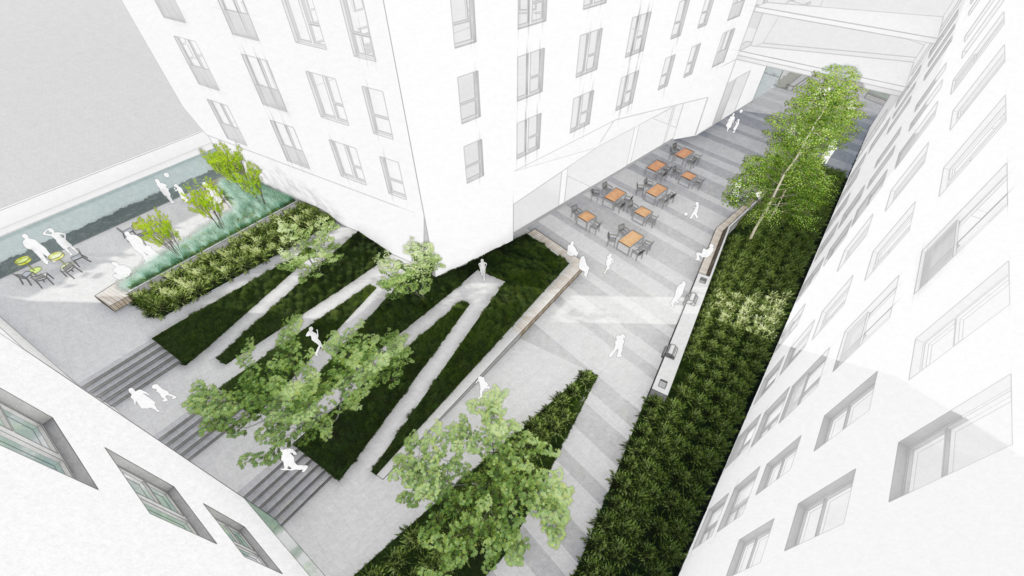
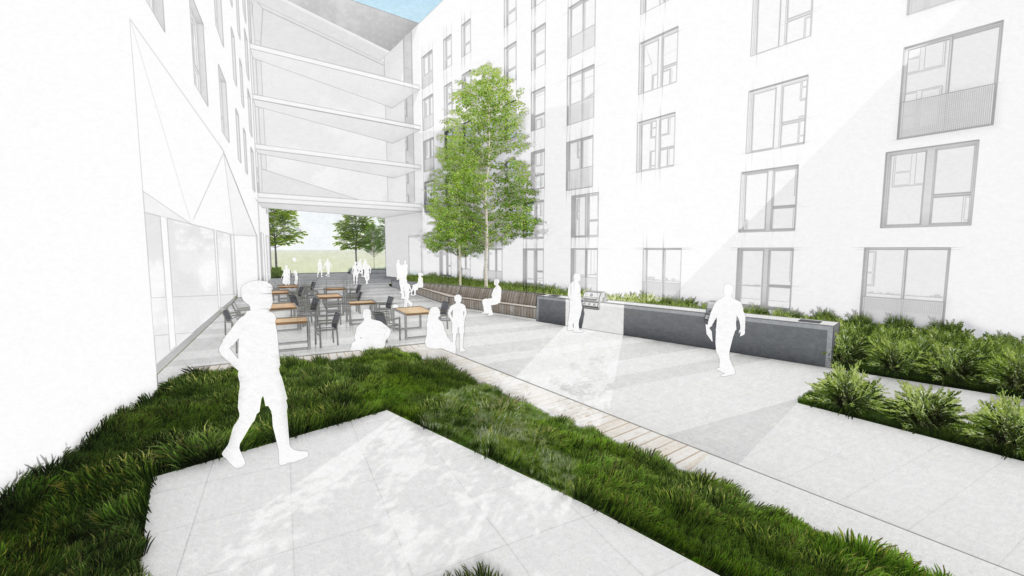
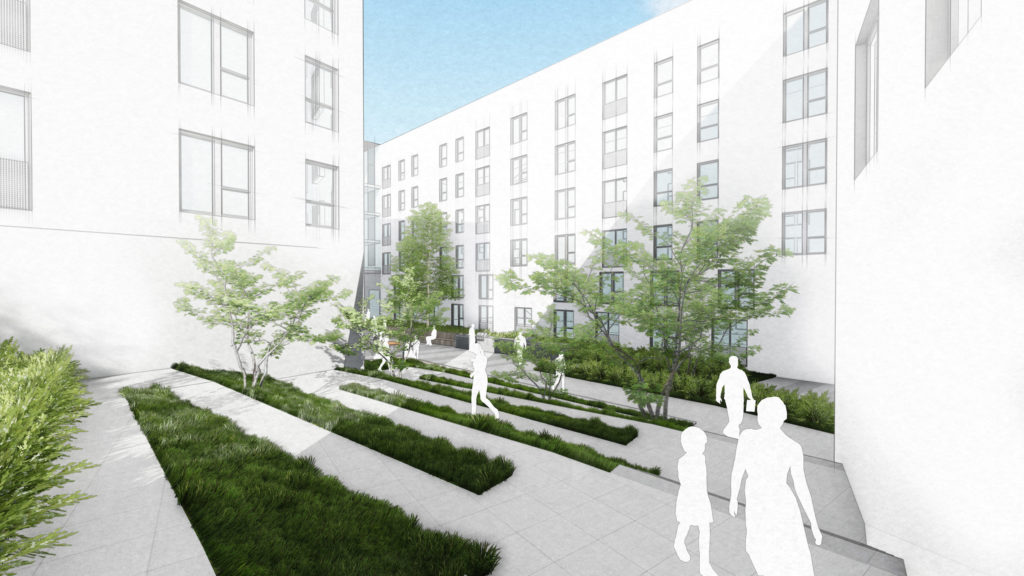
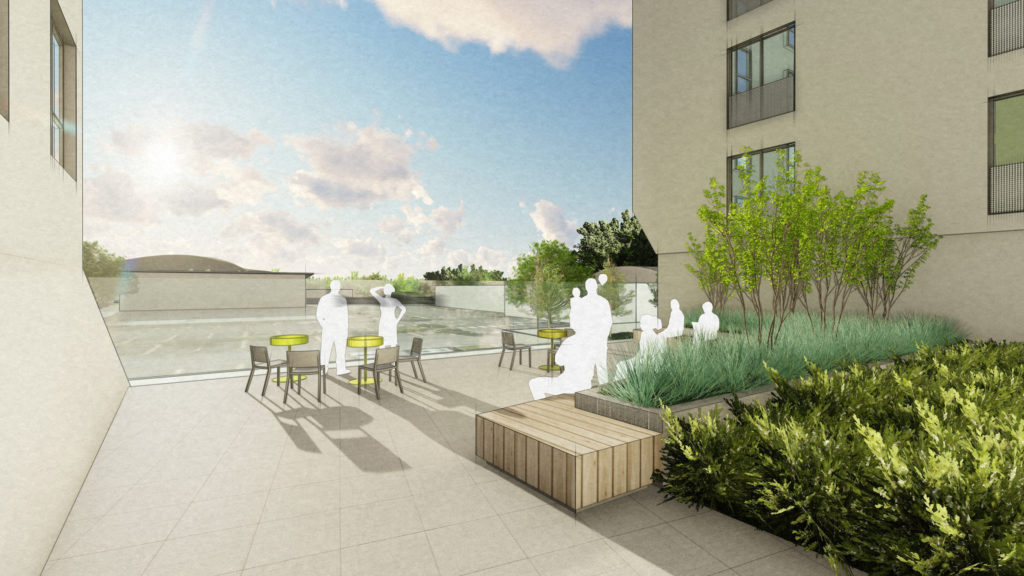
3000 SE Powell has now been in front of the Design Commission for two advisory meetings, held on May 16th and July 11th, 2019. A Summary Memo described Commission feedback from the second Design Advice Request meeting:
The Commission complemented the team on their responsiveness to the discussion at the first DAR, held on May 16, 2019, and once again noted appreciation for the opportunity to discuss the proposal again at this early design stage.
The Commission considered the general massing and design approach strong moves, and encouraged the following considerations moving forward to address the approval criteria:
1. The large massing break on SE Powell provides space for a large, activated and landscaped public plaza that serves as an eddy of calm for pedestrians alongside the busy boulevard, and this space is strengthened by the visual connections to the private courtyard beyond. Together, these work as important context creating moves, creating a stopping place with views towards the active uses within.
2. The courtyard functions as a strong organizing element and a useful amenity for residents of high-density housing, providing them with necessary outdoor space. It will be important to maintain a high level of visual connection into the courtyard from SE Powell.
3. Each frontage should respond to the different conditions presented, and both current and future contexts.
4. Simplify and strengthen the composition by reducing the number of compositional moves and strengthen the ones that remain.
In order to gain approval the project will need to go through a Type III Design Review, with public hearings in front of the Design Commission.
Drawings
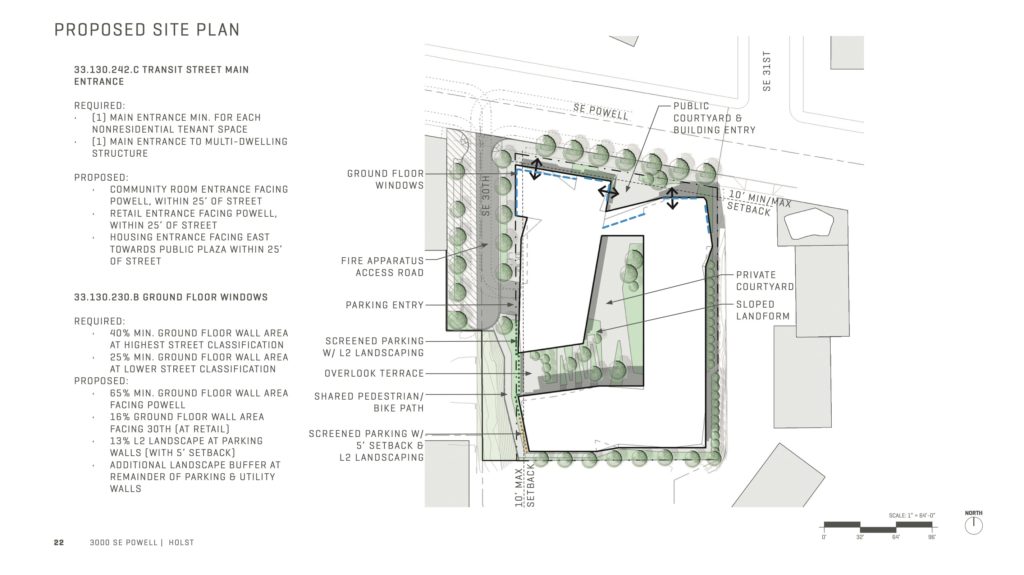
Plan | Site 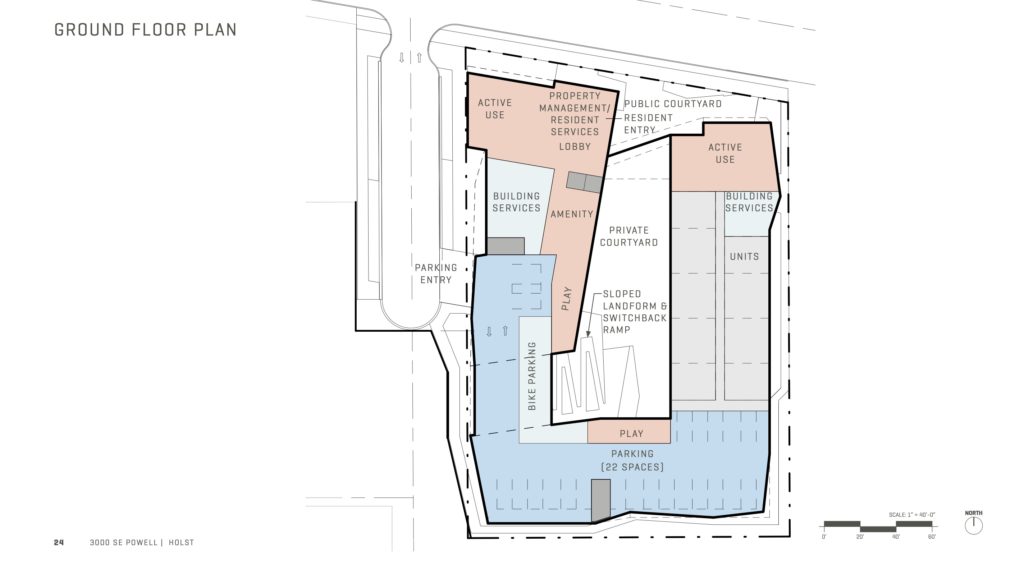
Plan | Ground 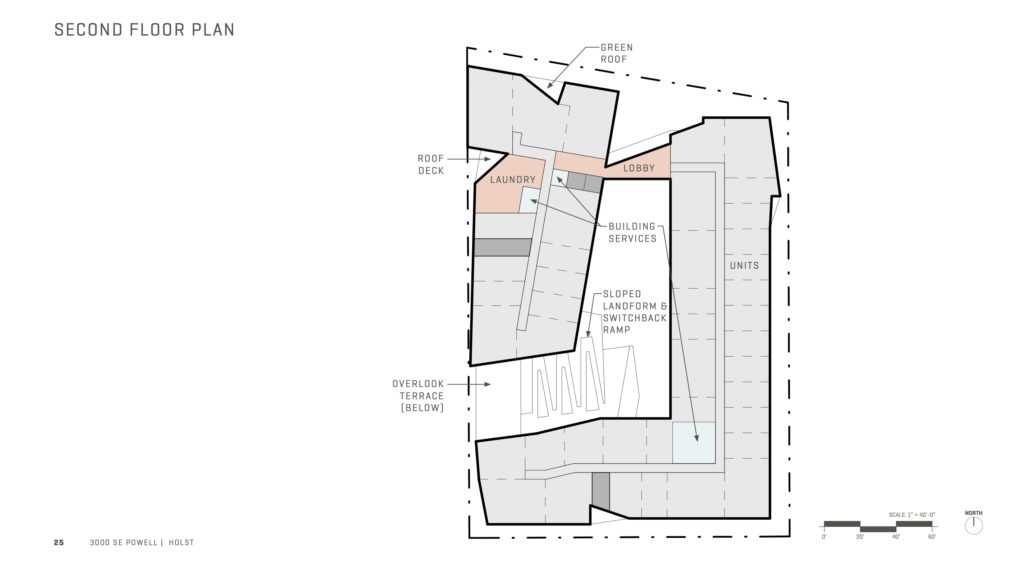
Plan | Second 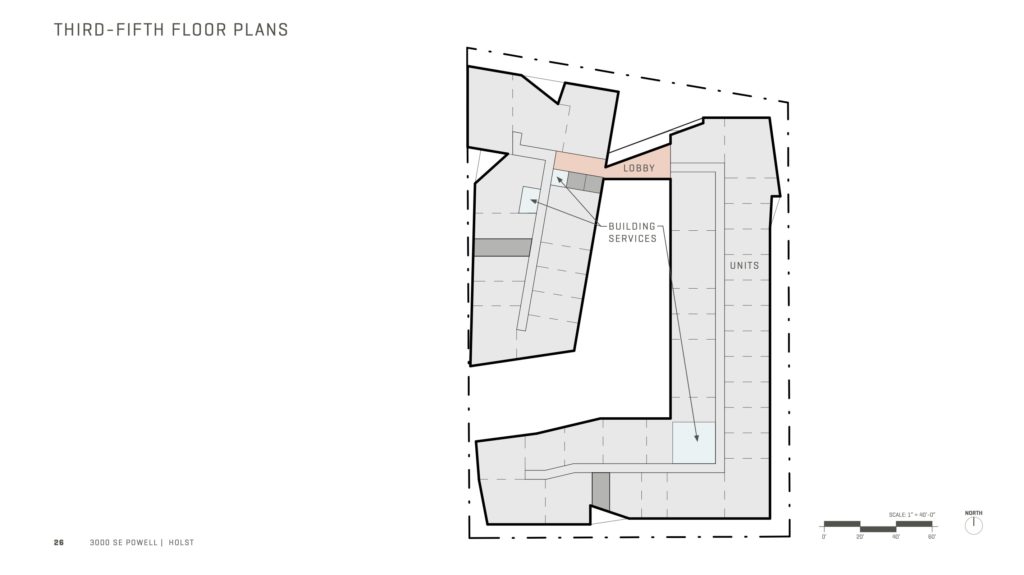
Plan | Third to Fifth 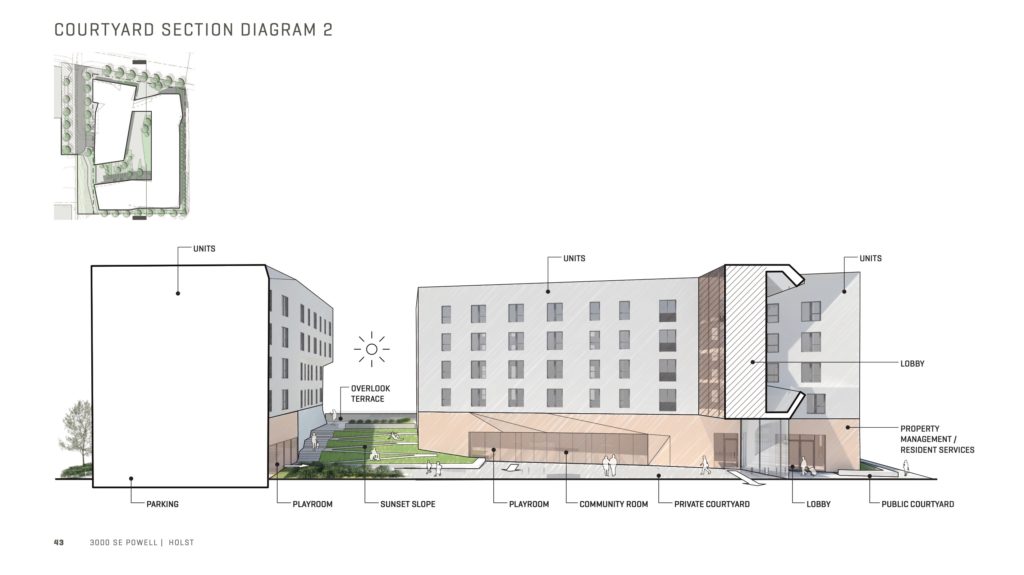
Section 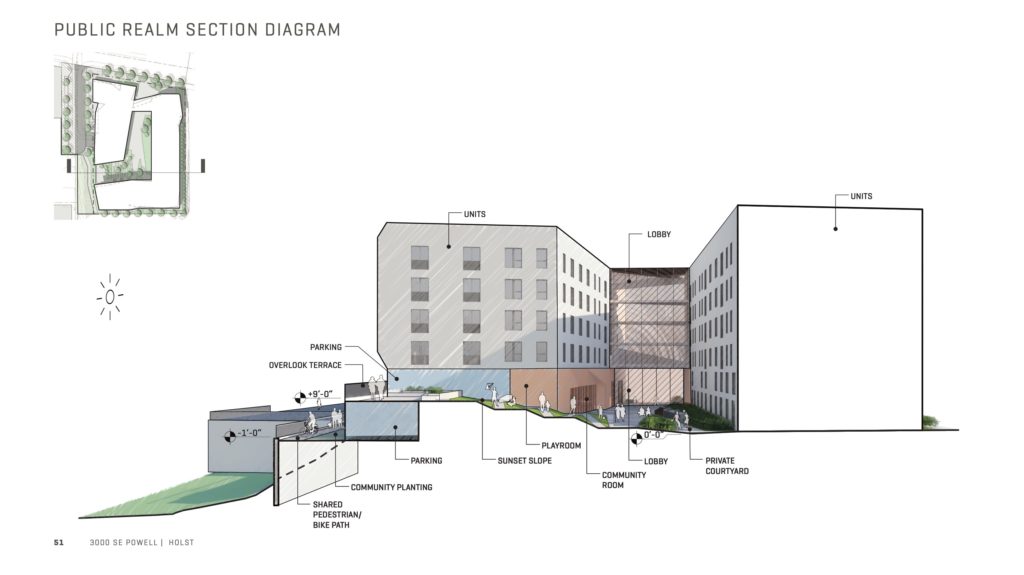
Section
Depressingly monolithic.
Well this is a improvement on all the tents on our sidewalks . . .So glad the city is moving full speed ahead with affordable housing, because the number of “Tent Cities” is alarming and destabilizing to our communities . . .
So house them all in shoebox apartments that should solve the problem..outa sight outs mind. Geez why don’t you provide them with something other than putting them away in a hermetically sealed box? What we are providing them with a future slum. Do you actually see any difference between this building and the public housing monoliths of the 60s and 70s that were torn down as a disastrous failures?
But instead we get more mental masturbation about design cloaking a monolithic piece of crap like public housing failures of the past along with the short sightedness that created them in the first place.
Feel free to propose a better idea and get it permitted through the city. Tearing down attempted solutions without providing a positive alternative only contributes to the problem.
Are we on the same page here!? I’m pretty sure this is affordable housing, not transitional housing. Where is all of this tent talk coming from? On top of that, if you don’t see a difference between this and Pruitt Igoe (if that’s what you meant to say) then you need to go crawl back in your hole. Do you even know WHY the “monoliths of the 60’s and 70’s” didn’t work? You sound like you need some design education.
They can build market rate housing with 0 vehicular parking spaces, but an “affordable” project needs 22 parking spaces?
Is there any bike parking proposed? A close in location that would be great for bike commuting?
Have you tried looking at the plans?
There is an area marked “bike parking” is that a cement pad with a few staples? A bike room that is secure? How many bikes is it designed for?
But still, the point, why is there any vehicle parking for “affordable” housing when there are new buildings renting for $2500 a month with no on site parking?
So affordable housing projects should have no parking, because expensive market-rate buildings without parking happen to exist?
I’d buy just about any argument to eliminate parking…but not that one. And what’s with the scare quotes?
“Affordable housing” is different. There are exacting definitions as to what it is. Government funds are involved, and they are treated differently. This is something that is being done by the Portland housing bureau.as part of a city initiative to build “affordable” housing and as such, it is not merely housing that is affordable, but must fit the city definition of “affordable housing”
So, yes, “affordable housing” should be built as frugally as possible until there is so much of it that it is not needed.
“affordable housing” is not the same as housing that is affordable, it is a separate, legally defined term.
BiIke parking is required for any new apartment building (https://www.portlandoregon.gov/bps/article/53320), and you can see it in the plans, too.
“big” does not equal monolithic. This is the former, which is good since we need all the housing we can get. This building provides a very generous courtyard space and looks like it will use color and chamfers to create something different and more interesting than 99% of the boring poorly built bullshit we see go up everyday.
Food for thought. Education? Why not learn from real comments people make instead of placing yourself on an educational pedestal incapable of listening to comments that don’t agree with your opinion. Face it the building IS monolithic, overscaled, and depressingly impersonal and will be detriment to the community in the longrun.
Being a former resident of public housing experience provides more education of living in a building similar to this. The courtyard actually creates a prison like compound with no privacy or personal outdoor space and views looking directly across at everyone else in the courtyard.
The monolithic repetitive facade fenestration again homogenizes every unit much like the military housing. The long interrupted mass could be broken to provide natural light from more than one direction greatly improving the quality of space of the units while reducing the apparent mass.
Maybe the designers should be required to live in the buildings for two years to experience what we had to live with as residents of a housing project like this.
When the building become too monolithic, overscaled, irresponsive to user comments it loses the ability to become an asset to the community and its inhabitants. No matter how you try to put lipstick on it.
Additional food for thought.
https://www.city-journal.org/html/how-public-housing-harms-cities-12410.html
I am channeling James Downey so heavily right now, but we will never see eye-to-eye on this, so we will just agree to disagree.
The parking is primarily for staff. They expect few of the residents will own cars. The whole building is 60% MFI and lower, I believe.
Parking needs are always heavily underestimated which put a huge burden on the surrounding area. It is irresponsible to assume 22 spaces will be enough for 180 units. There WILL be more then 22 cars. There will likely be more then 100 cars. Ignoring this does not make people not have cars, it just moves the burden of parking to the neighborhood. Check out the areas all over Portland with new giant tenements,you can hardly see the sidewalks for the cars. Imagine the joy of the bus drivers trying to navigate the narrowed streets with stops they can no longer get near.
This could be easily fixed but the same people who complain about the cars taking up all the parking spaces also complain about residential parking permits.
What tenements were built lately?
I was at the meeting at Creston Kenilworth neighborhood, and Julie Livingston of Home Forward said that the clients they have in other buildings mostly don’t have cars. She said that one of their buildings that has 220 units only has 20 renters who have cars. These are pretty low-income folks (all at 60% MFI or below) and most can’t afford a car.